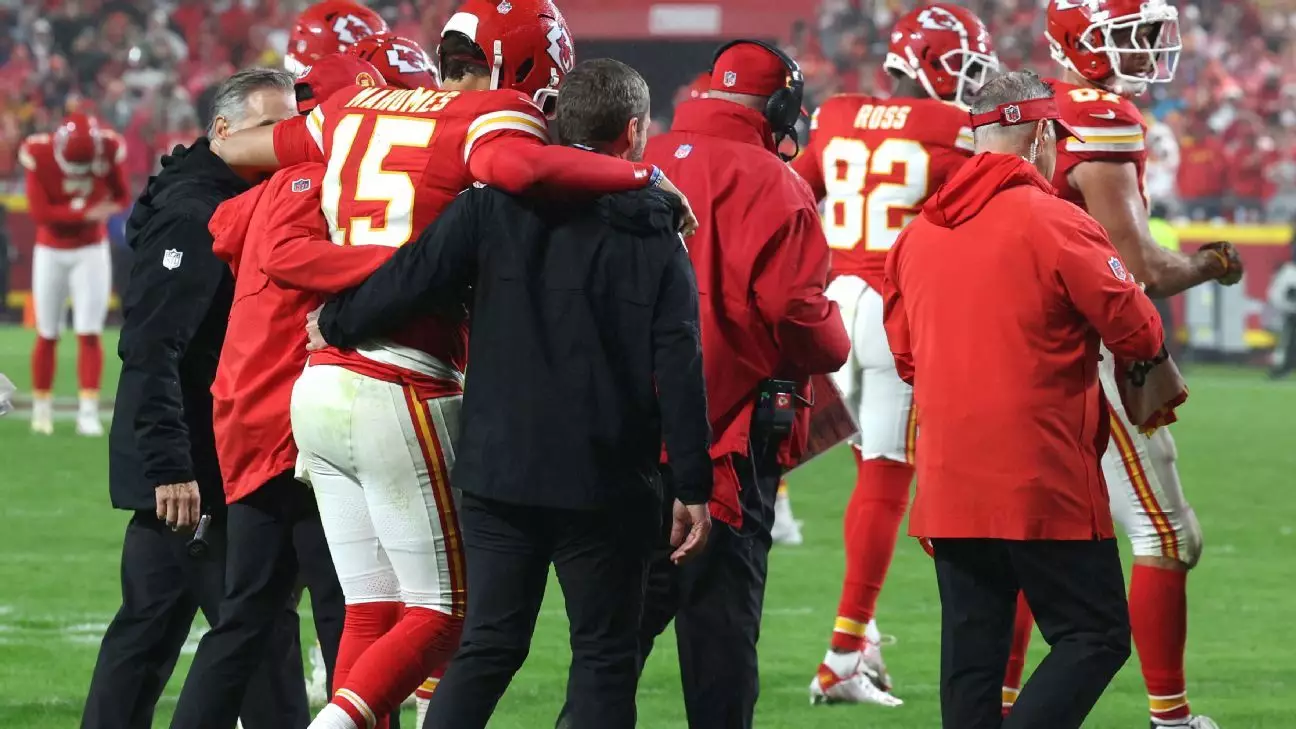In a highly charged match against the Tampa Bay Buccaneers this past Monday night, Kansas City Chiefs’ quarterback, Patrick Mahomes, experienced a moment that would send chills down the spine of any football fan. With the game hanging in the balance during the fourth quarter, Mahomes sustained an injury to his left ankle, reminiscent of an earlier incident that had sidelined him during the 2022 playoffs. The fear of re-aggravating a previous injury combined with the intensity of the occasion showcased not just the competitive spirit of Mahomes but also the substance of his character. “Definitely scary,” Mahomes admitted once the dust settled, reflecting on the moment that had many holding their breath.
Though Mahomes had to be aided off the field, the anticipation surrounding his potential exit only began to weigh heavily on the collective psyche of both fans and teammates. The competitor within him, however, refused to back down. Despite the pain and uncertainty, Mahomes chose to rally and push through, ultimately leading the Chiefs to victory. After a few anxious moments, he returned to the field and played a pivotal role in sealing a 30-24 overtime win. It was not just about the physical challenge but also a testament to his resilience under pressure.
Coach Andy Reid’s initial instinct was to substitute Mahomes, a decision that was met with skepticism from the player himself. “I thought he was joking,” Mahomes said in light of Reid’s intervention. This moment encapsulated the passionate dynamic between a head coach wanting to protect his franchise player and the player’s fierce desire to compete. For Mahomes, this was not just another game—it was a chance to solidify his status as a leader, making his return all the more powerful.
What Mahomes endured was not just a physical challenge but an emotional rollercoaster. He learned several lessons from his past injuries, particularly the severity of his right ankle injury in the 2022 playoffs, which resulted in him being forcibly removed from the game. This time around, Mahomes was more aware of his own body’s signals. The momentary pain of the ankle roll sparked fears of losing another crucial season, reminiscent of the haunting memories of 2022 when an untimely injury dictated much of his postseason performance.
Once he was back on the field, Mahomes executed a remarkable 10-play drive that culminated in a touchdown run, painting a vivid picture of sheer determination. “You feel the pain, and that scares you,” he explained, reflecting the internal battles athletes often face when managing injuries. His attitude after this latest scare serves as an encouragement not just to his teammates but to his critics as well—who often downplay the mental aspect of athletic performance.
Ultimately, Mahomes’ experience highlights not just the physicality of football but also the mental toughness required at the upper echelons of the sport. It illustrates the significant reliance on a quarterback, not only for tactical plays but also for morale and leadership on the field. His rapid recovery and ability to focus on the next challenge—the upcoming game against the Denver Broncos—are reflective of his maturity as a player.
As Mahomes had wished, he would be ready to face his next obstacle, and that mindset is what drives both him and the Kansas City Chiefs toward continued success. The resilience demonstrated by Mahomes is a blueprint for athletes and leaders—maintaining composure, focusing on the task at hand, and rising back up after falling is what separates the good from the great in sports.

Leave a Reply